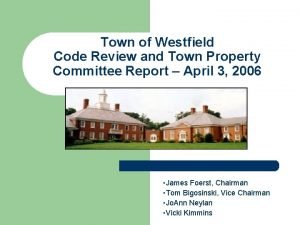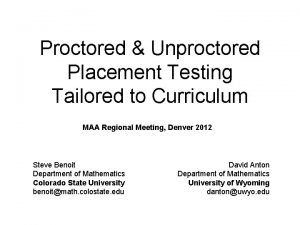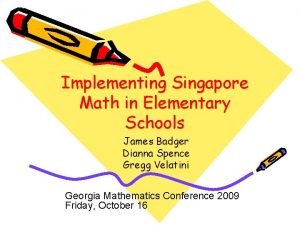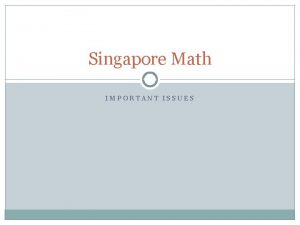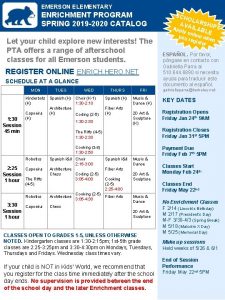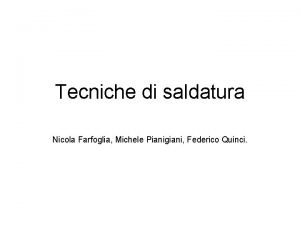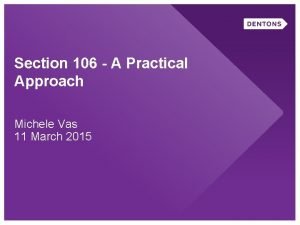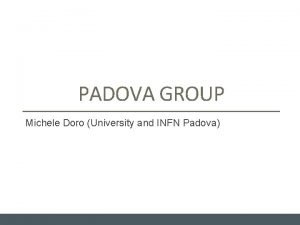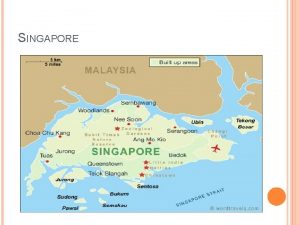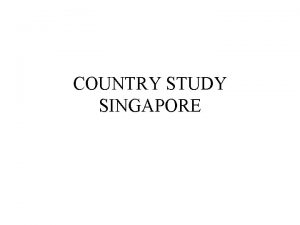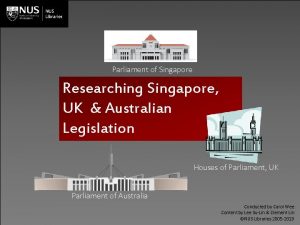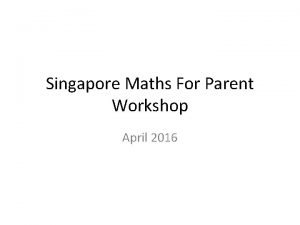Singapore Math Michele Klemaszewski Westfield State University Spring





















- Slides: 21

Singapore Math Michele Klemaszewski Westfield State University Spring 2013

A typical 5 th grade Singapore Math problem: To prepare for a trip, Keisha spent 1/4 of her money on clothes. She spent 1/3 of the remaining money on a bag. She next bought a camera that cost $15 more than the bag, and had $95 left. How much money did Keisha have to begin with?

Keisha spent 1/4 of her money on clothes. . . Since we know she spent 1/4 of the money on clothes, we draw four boxes to represent those "fourths", and designate the first for clothes. Clothes 1/4 1/4

She spent 1/3 of the remaining money on a bag. . . What remains is 3/4. We know she spent 1/3 (or one block) of this money on a bag. Clothes Bag 1/4 1/4

She then bought a camera that cost $15 more than the bag. . . The camera was $15 more than the bag, or we could see it as $15 more than one unit. We now have two units remaining, with the camera price illustrated as $15 over one unit: Clothes Bag 1/4 Camera 1/4 $15 1/4

. . . and had $95 left. We know the amount she had remaining after her purchases was $95. We then can see that one unit (or 1/4) of the total is $110. $15 + $95 = 110 Clothes Bag Camera $95 $15 1/4 $15 + 95 = 110 1/4 1/4

How much money did Keisha have to begin with? We see that one unit is $110 x 4 = $440 We can now conclude that Keisha began with $440, $110 Clothes Bag 1/4 $110 Camera 1/4 $110 $15 $95 1/4

A sixth grade Singapore Math word problem Before and After Last year, the ratio of the numbers of boys to girls in the computer club was 1: 2. This year, 70 new members joined the computer club. There are now 4 times as many bays and 3 times as many girls as last year. How many members were in the computer club last year?

A sixth grade Singapore Math word problem Before and After Last year, the ratio of the numbers of boys to girls in the computer club was 1: 2. This year, 70 new members joined the computer club. There are now 4 times as many bays and 3 times as many girls as last year. How many members were in the computer club last year?

A sixth grade Singapore Math word problem Before and After Last year, the ratio of the numbers of boys to girls in the computer club was 1: 2. This year, 70 new members joined the computer club. There are now 4 times as many boys and 3 times as many girls as last year. How many members were in the computer club last year?

A sixth grade Singapore Math word problem Before and After Last year, the ratio of the numbers of boys to girls in the computer club was 1: 2. This year, 70 new members joined the computer club. There are now 4 times as many boys and 3 times as many girls as last year. How many members were in the computer club last year?

A sixth grade Singapore Math word problem Before and After Last year, the ratio of the numbers of boys to girls in the computer club was 1: 2. This year, 70 new members joined the computer club. There are now 4 times as many boys and 3 times as many girls as last year. How many members were in the computer club last year?

Brief History • • Beginning in 1980, the country of Singapore began to set it's own standards for mathematics education. Prior to that, Singapore's mathematics textbooks were imported from other countries. By 1995, the resulting curriculum placed Singapore's students first among participating nations in Trends in International Mathematics and Science Study (TIMISS). In subsequent years, studies continued to show Singapore as a top-performing nation in Mathematics performance.

History, continued Singaporemath. com Jeffery and Dawn Thomas Singapore Math Inc® Free Online assessments to determine which level to start with: ttp: //www. singaporema

The Singapore Model • Uses pictorial models to introduce abstract concepts • Utilize "bar model" method of solving word problems • Simple systematic word problems, not written to confuse • Minimising the rote drill, but still reinforcing learning • Child Friendly Language • Not written for the American market (Book V of Euclid's Elements, written in the 4 th century BC)

Major differences between the traditional American model, and the Singapore model. • Traditionally about 30 math concepts can be covered in one year using a spiral approach that introduces concepts and revisits them with added complexity. This method “does not expect mastery, ” leaving some students bored when a concept is revisited, and moving on before it’s fully grasped by other students. In contrast, Singapore Math covers 10 -14 concepts a year, stays with each 2 -3 weeks, and expects mastery before introducing a new lesson. Metric • •

Analyzing Parts and Wholes: A 7 th grade Singapore-style word problem A Store sold 4 tables and 5 chairs for $752. Each table cost $80 more than each chair. How much did the chairs cost all together?

A Store sold 4 tables and 5 chairs Tables Chairs

Each table cost $80 more than each chair. $80 Tables $80 Chairs

A Store sold 4 tables and 5 chairs for $752. $80 80 x 4 = 320 $80 752 - 320 = 432 Tables $80 Chairs 432/ 9 = 48 (9 units total) $80 Each unit =$48

How much did the chairs cost all together? $80 $48 80 x 4 = 320 $80 $48 752 - 320 = 432 $80 $48 432/ 9 = 48 (9 units total) $48 Each unit =$48 $48 x 5 = $240 Tables $80 Chairs
 External stakeholders
External stakeholders Westfield state curca
Westfield state curca John lewis westfield
John lewis westfield Westfield sports injuries
Westfield sports injuries Dmv westfield nj
Dmv westfield nj Scaphiod fracture
Scaphiod fracture Westfield
Westfield Westfield referral code
Westfield referral code Pandora chatbot
Pandora chatbot Colorado state university math placement exam
Colorado state university math placement exam Singapore math concrete-pictorial-abstract
Singapore math concrete-pictorial-abstract Singapore concrete pictorial abstract
Singapore concrete pictorial abstract Spring summer fall winter and spring cast
Spring summer fall winter and spring cast Months of spring
Months of spring Math enrichment spring 2020
Math enrichment spring 2020 Math game math hit the button
Math game math hit the button Michele weiss
Michele weiss Michele amorena
Michele amorena Michele pianigiani
Michele pianigiani Michele vas
Michele vas Michele cirelli
Michele cirelli Michele doro
Michele doro







